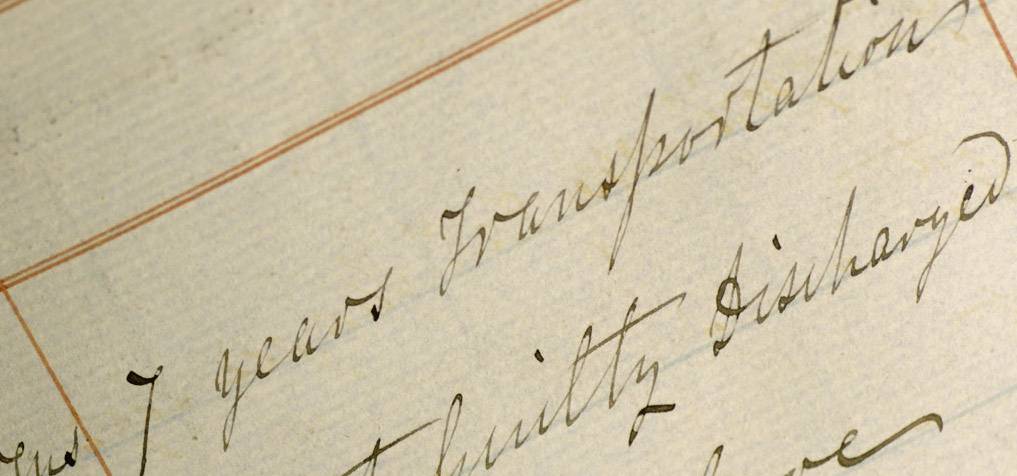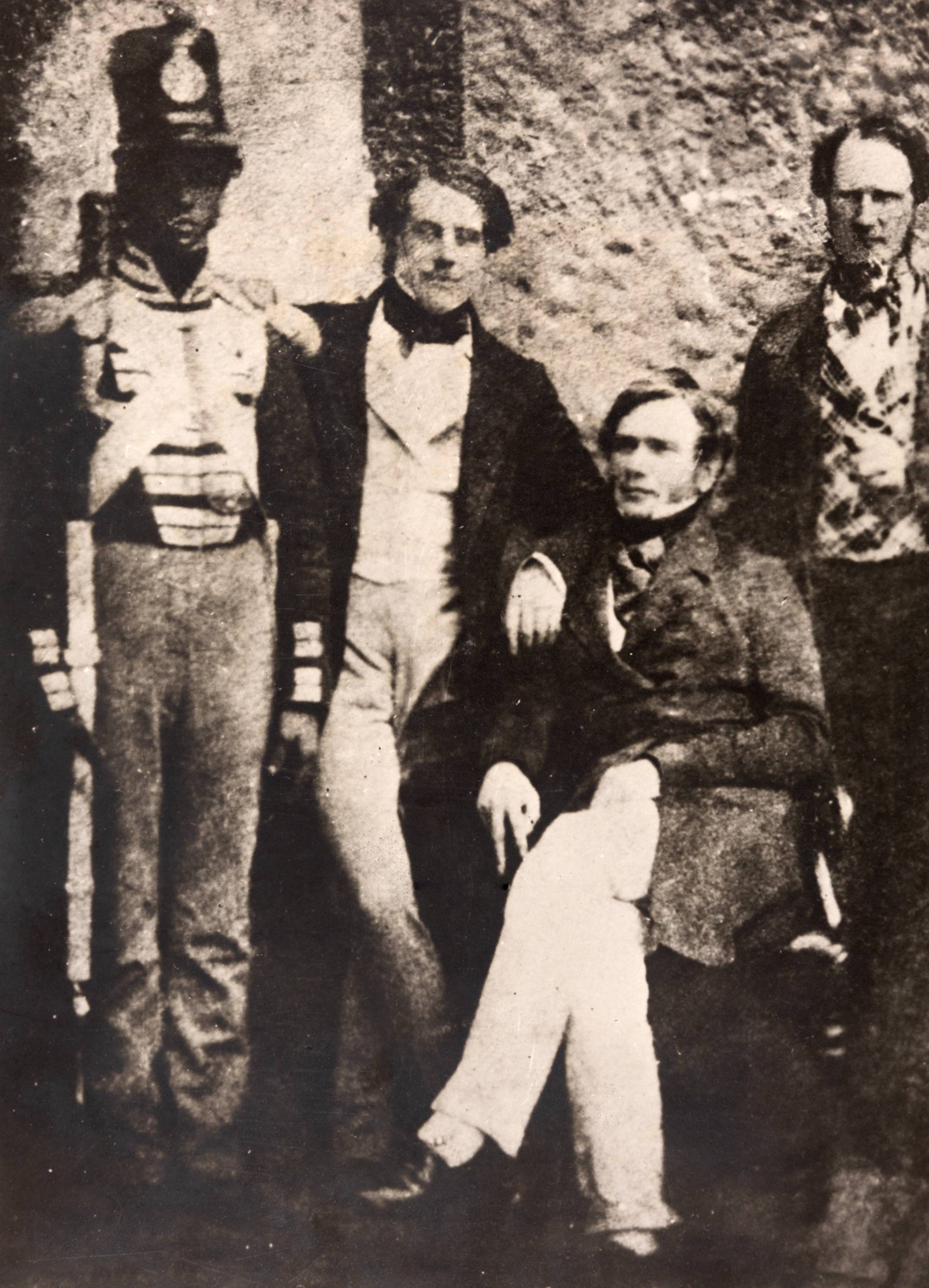Transportation
Over 4,000 prisoners were processed through Kilmainham during this time. Most were either petty criminals or political prisoners. The convicts were usually sentenced to seven years, fourteen years, or life. Australia was chosen for its remoteness; it replaced North America as a penal destination after the American Revolution. On arrival, prisoners laboured in public works or were indentured to farm or domestic work. There were also thirteen Female Factories (workhouses) where women were held. Once a convict’s term was up, they were granted a Certificate of Freedom, which allowed them to either stay on in Australia as a free person, or else leave and return homeward.
After the Young Ireland Rebellion of 1848, William Smith O’Brien (1803-1864) and Thomas Francis Meagher (1823-1867) were arrested and held in Kilmainham. They are pictured, probably in the Gaol, here. Smith O’Brien is seated, and Meagher is to his left. Their death sentences were commuted to transportation, and both travelled to Van Diemen’s Land. Smith O’Brien served out his sentence and later returned to Ireland. Meagher escaped and went to America, where he rose through the ranks of the New York Irish Brigade, eventually becoming Acting Governor of Montana.


